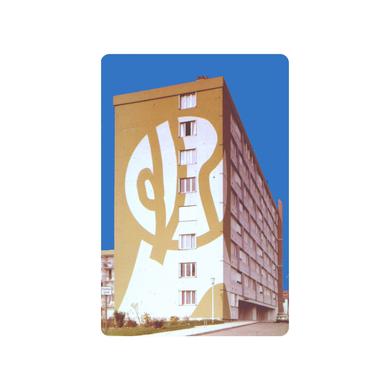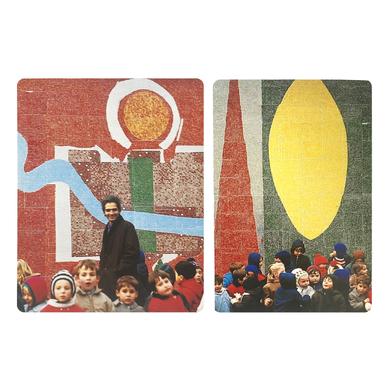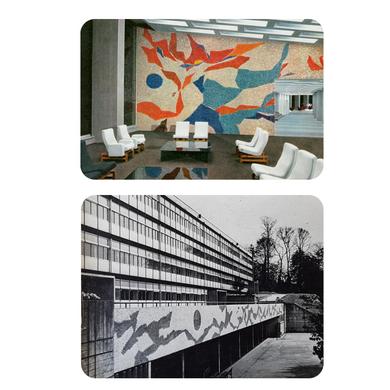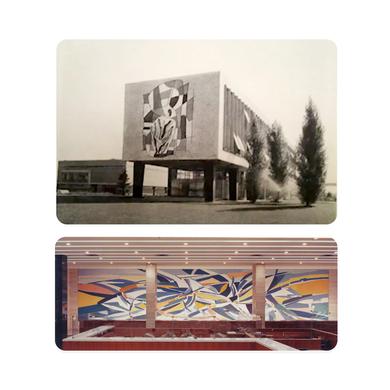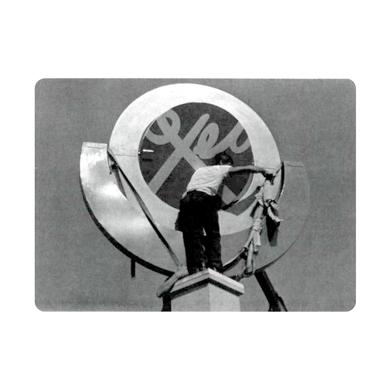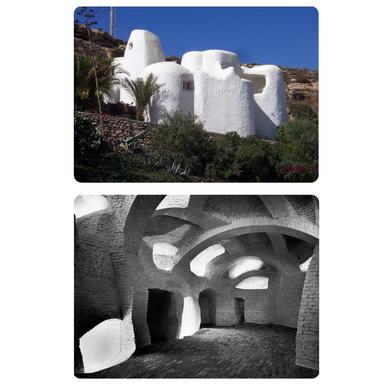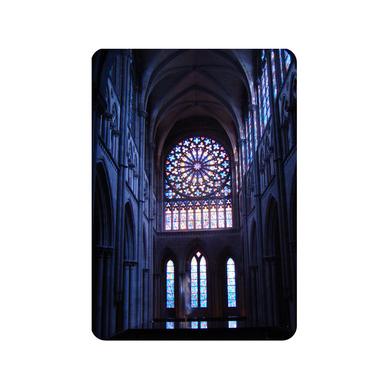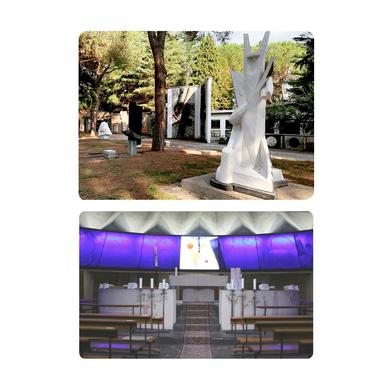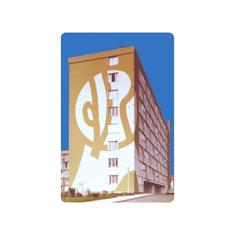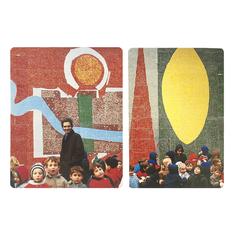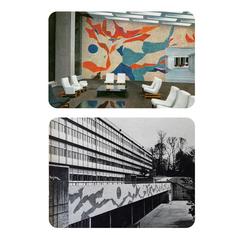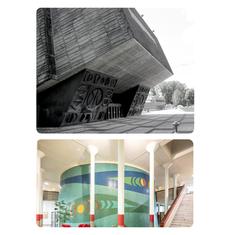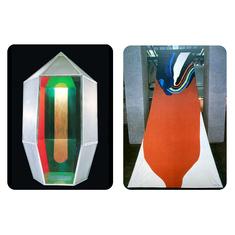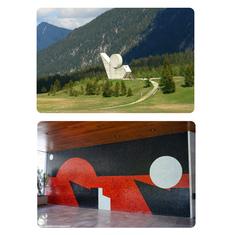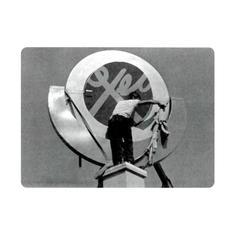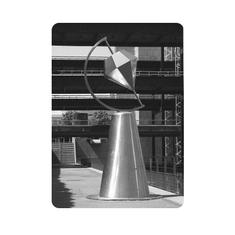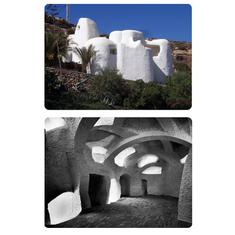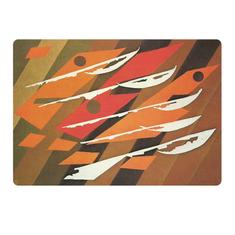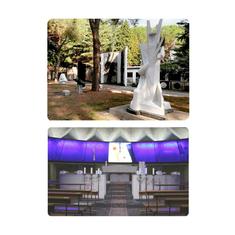Since the destruction caused by WWII France has established a policy of integrating art and architecture for the spiritual enrichment of society. In 1945 Charles de Gaulle appointed the novelist and intellectual André Malraux as information minister, subsequently France’s first cultural affairs minister. Malraux insisted on substantial funding of public works being allocated to artistic commissions, an ethos which would later become legislated as the “1%” policy, that being the portion of construction costs to be spent on artwork, and administered by the Fonds d’Intervention Culturelle (FIC).
During the post-war era numerous public buildings from schools and universities to rail stations and government buildings, benefitted from Malraux’s passionate belief in the arts, with contemporary artists being commissioned for everything from paving designs, mosaics, murals, and monuments. A fine example is the “Maison de la Radio” in Paris which in 1962 was adorned with a vast vibrant abstract mosaic by Gustave Singier, as well as giant tapestry wall hangings by Pierre Soulages and Alfred Manessier, and a sculptural wooden screen by Francois Stahly. Similarly the “Faculté des Sciences” in 1970 incorporated a 570sqm enamelled mural by Léon Gischia, paving by Lagrange, a 5m bronze by Jean Arp, and a 760sqm mosaic by André Beaudin, amongst others.
In parallel to public policy the polymath artist André Bloc, who had founded the influential journal “Architecture d’Aujourd’hui” in 1930, published the “Éspace” manifesto in 1951 calling for a utopian harmony through social integration of the arts, signed by many artists, designers and architects, including Le Corbusier, Magnelli, Deyrolle, Pillet, and Bozzolini. Edgard Pillet’s geometric aesthetic lent itself particularly well to avant-garde architecture such as the Amphitheatre Louis Weil in Grenoble.
Elsewhere, abstract painter Jacques Lagrange created a dazzling design for the terrace spanning the width of Paris’s first skyscraper “Le Tour Croulebarbe” designed by Edouard Albert in 1960. While colourist James Pichette covered a huge modernist apartment block in Vitry-sur-Seine in a bold geometric pattern in 1971.
Contemporary artists were also employed to design replacement windows for churches such as Jean Le Moal’s kaleidoscopic rose window for the Cathédrale de St Malo in 1972; and Silvano Bozzolini’s collaboration with avant-garde architect G-H Pingusson for the rebuilding of the Église St Maximim, Boust, in 1962.
In this exhibition we are delighted to bring together a selection of these artists and archive material illustrating their architectural commissions during this rich period of cross-disciplinary integration.

